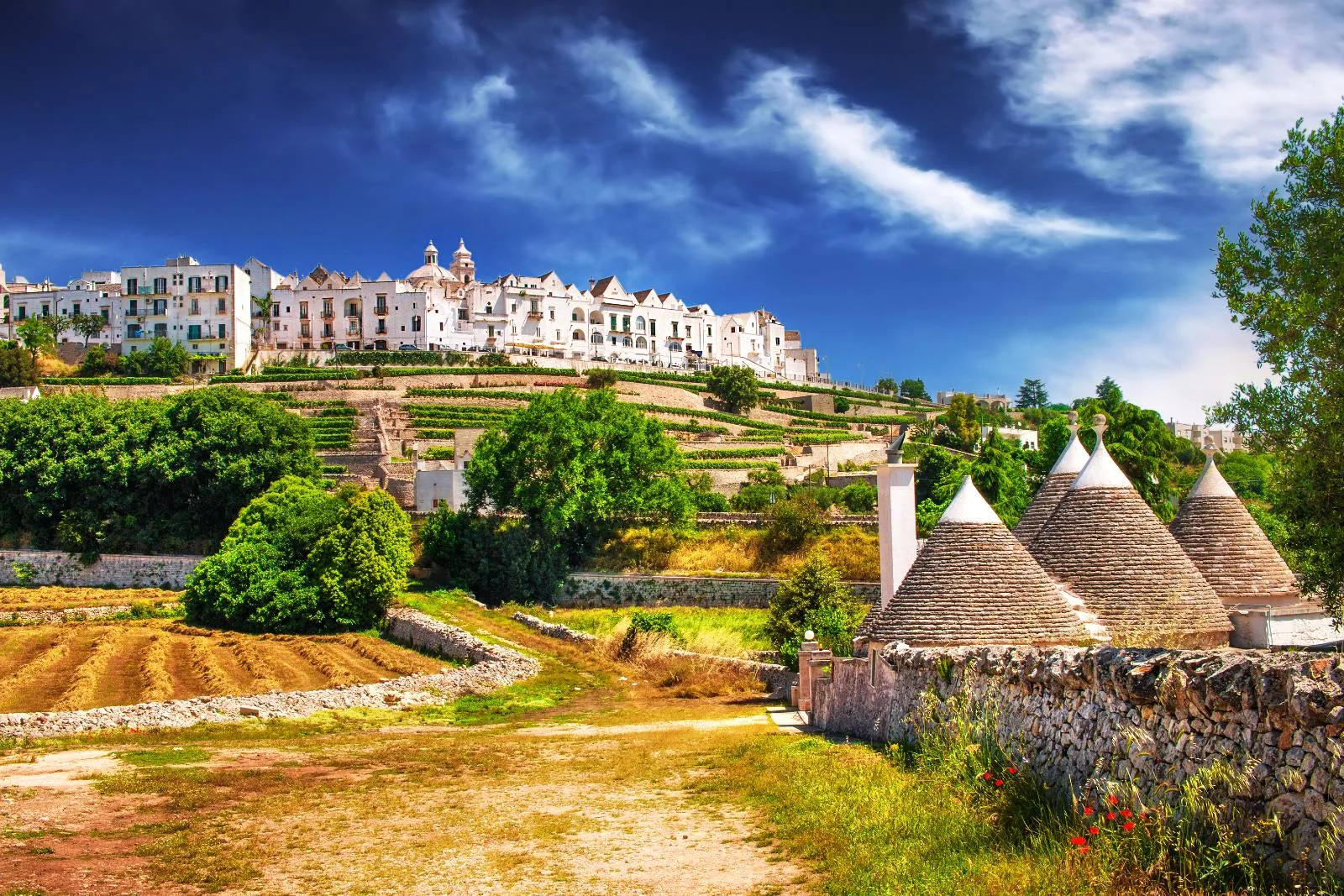Erected around 1660 at the initiative of a locorotondo notable, the Church is close by high surrounding houses that leave in view only the meager facade, whose original form to the hut with a bell gable wall remains very little. The architectural structure of the small building is very simple, but original: a single nave covered at the front by a barrel vault and, for the rest, by a dome with drum on the pendentives. Such a combination corresponds to the outside the engagement of a sloping roof with the cone of a trullo, the imbricated both with the usual chiancarelle limestone, whose gray well contrasts with the white of the lime. Inside the interruption of the cornice on the first arch, the presence of a lesion in correspondence with it along the whole length of the curvature of the barrel and some diversity of execution of the masonry, suggest different moments of building. The small raised environment, in correspondence of the second arch right, was intended to the sacristy and probably, being open, also acted as cantorìa. The inner surface is largely occupied by a rich pictorial decoration which follows a precise thematic division: to set the cask we find ten frames (Five each side) with scenes from the life and miracles of San Nicola di Myra and, above, a theory of musician angels; on the pendentives are represented the four Evangelists, among which it is worth noting the San Luca, valuable for the unusual iconographic version: This wants, in fact, that the holy is shown while depicting a Madonna with Child in so far as it is the only one in the Gospels that undertakes to speak of Mary. But beyond the fact allusive, this appears to correspond to the widespread tradition by the first Christians according to which Saint Luke would actually painted the first image of the Madonna, the so-called Hodigitria of Constantinople, where the child appeared on the left arm of the Mother, as well as in the representation of our plume. In the four compartments of the drum there are scenes of the hermitic life and, on the intrados of the cupola, a festive series of cherubim rotating around the Eternal Father portrayed with the classic a globe and in the act of blessing. The only existing altar is decorated by a newsstand of broken tympanum, taste of the late sixteenth century, in which the pane are portrayed San Nicola and Sant’Antonio da Padova in adoration of the SS. The sacrament; the scene is completed at the bottom by a little angel that carries three golden balls, a symbol of the holy of Myra. Finally we remember, always on the cask, the small circular balustrade painted a trompe l’oeil, i.e. a visionary perspective within which is positioned a dove. This considerable pictorial production can be dated in part in the years immediately following the building, in part (pendentives, dome and the framework of the altar) between the end of ‘700 and early ‘800. Under the second arch on the left is located a low relief in stone of the Crucifixion much more ancient of the church (the polychrome coverage is more recent), and that shows to have been cut into several parts; this validates a news reported by a historical Nineteenth Century according to which it was found in a cave in the surroundings of Locorotondo. The church can be visited in the following opening hours: 7,30-12,30 17,00-20,00.




